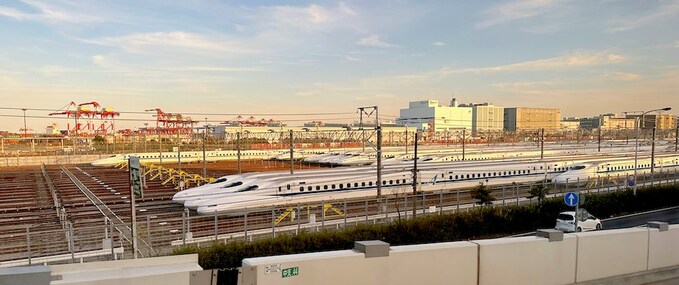Find out everything you need to know in our comprehensive guide to travelling on Japan’s iconic ‘Shinkansen’ bullet trains.
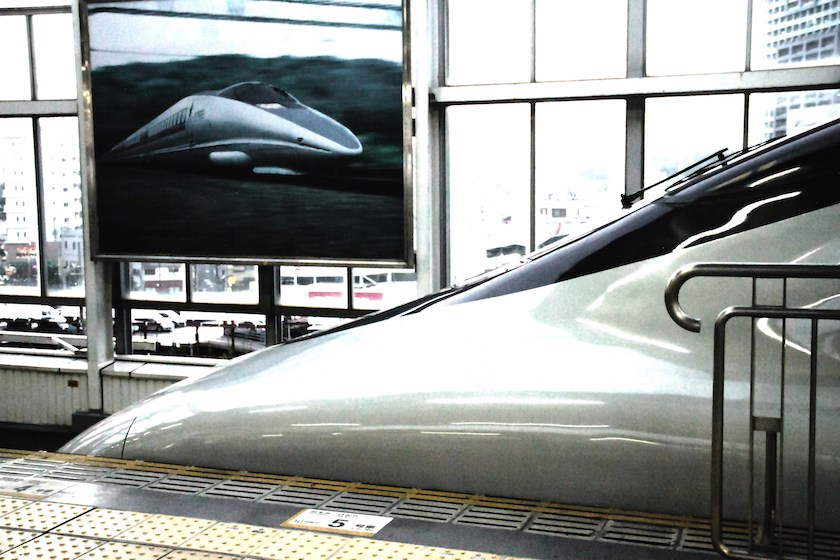
Intro
Japan’s iconic bullet trains, known as ‘Shinkansen’, are world-famous and rightfully so. Fast, futuristic, efficient, safe, and comfortable - Japan’s ‘Shinkansen’ are arguably the most famous trains in the world. More than a means of transport, ‘Shinkansen’ are a must-see tourist attraction in themselves that have become synonymous with Japan. Travelling on a bullet train in Japan is one of many bucket-list experiences for visitors to this incredible country - as essential as visiting the Eiffel Tower in Paris or the Statue of Liberty in New York - and it also has the added benefit of enabling you to reach destinations right across this spectacular country. In our complete guide to experiencing Japan’s high-speed Shinkansen trains, we’ll tell you everything you need to know about travelling on the iconic bullet train, from reserving seats to the most cost-effective ticket options with the JR Pass for unlimited travel, the newest routes, fun facts, and much more. All aboard!
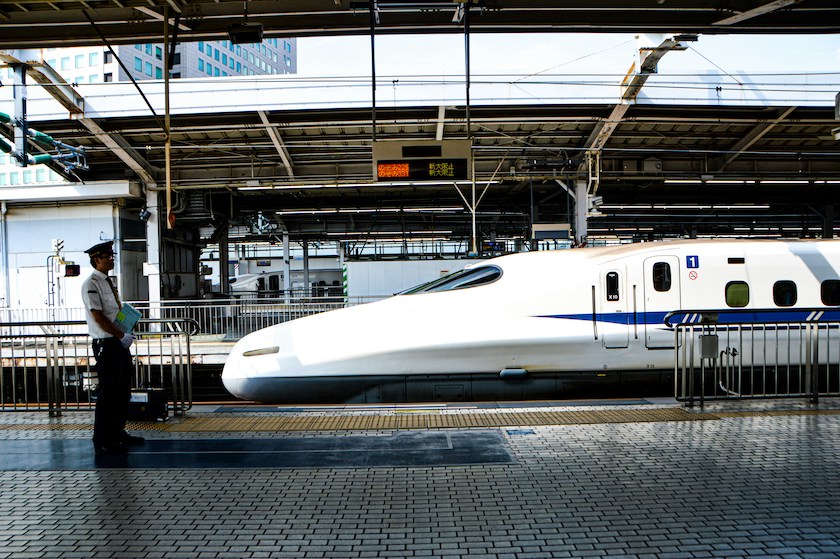
What is the Shinkansen?
The Japanese word for ‘bullet train’ - Shinkansen - can be directly translated as ‘new trunk line’. It also draws on the Japanese word dangan ressha (弾丸列車), as well the bullet shape nose of the very first Shinkansen train series. Despite translating as ‘new trunk line’, for several decades now the word Shinkansen has been more commonly used to refer to both the trains themselves and the tracks they operate on. The country’s Shinkansen trains are operated by Japan Railways (JR) Group and connect Japan’s main islands, from the city of Sapporo in the north to Kagoshima in the south. In between those two stops, these incredible high-speed trains visit almost all of Japan’s major cities - Tokyo, Nagoya, Kyoto, Osaka, and many more - using a number of different, interconnecting Shinkansen lines and train categories. With one or two minor exceptions, these lines are also exclusively for Shinkansen trains. As a result, practically no city is off-limits to citizens and tourists alike, especially in combination with a Japan Rail Pass - a special all-inclusive ticket for unlimited travel on the entire national JR network, including the high-speed Shinkansen bullet train lines. 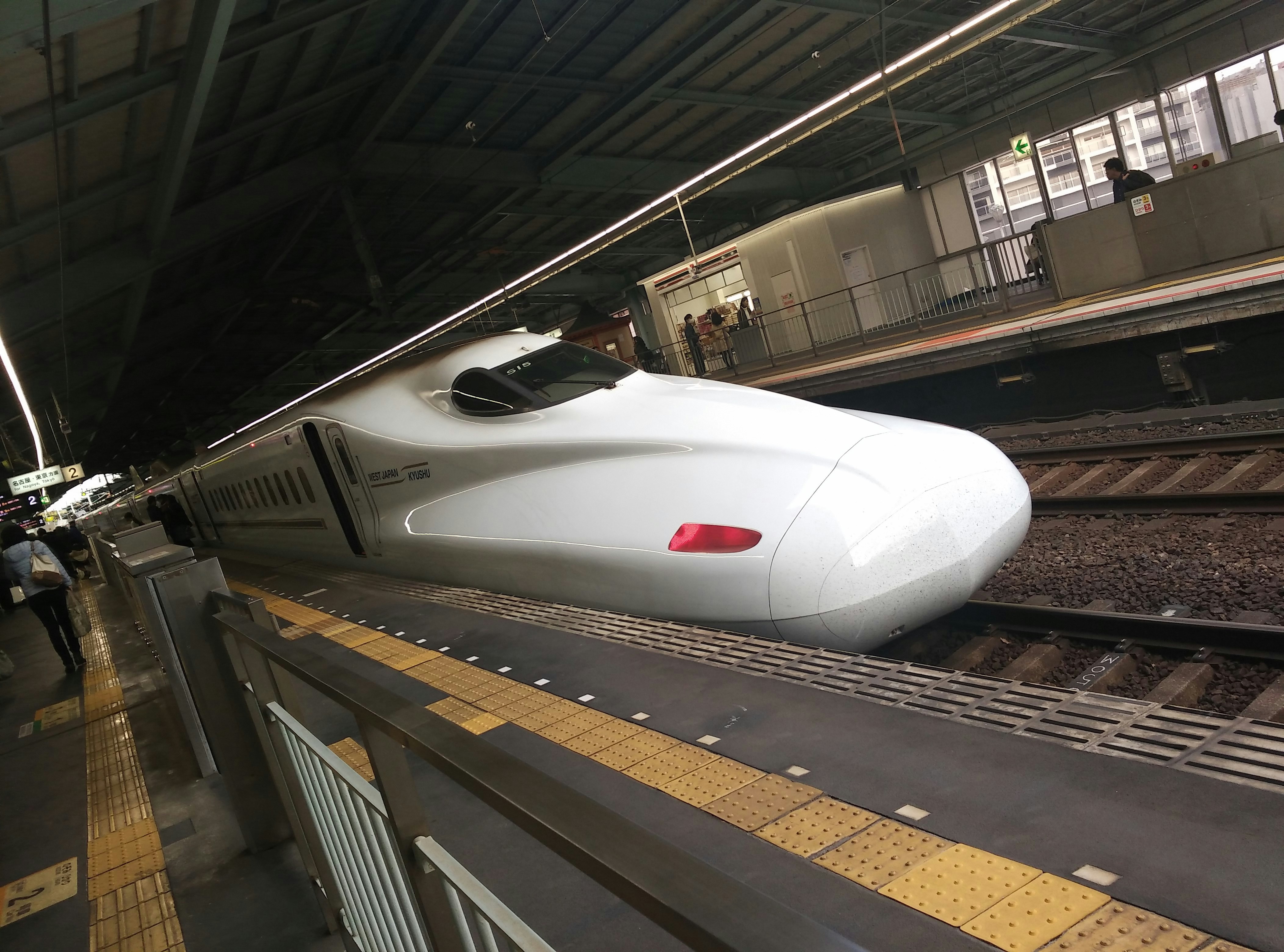
The Tokaido Shinkansen is arguably the country’s most popular line. Travelling from Tokyo through Kyoto and Osaka, the line hits several major cities all by itself. This same line has run through those same cities since feudal Japan. Originally for the purpose of trade, the route was of significant importance as it connected nearly every major city. Today, the line operates within three train categories, differing in terms of speed and availability. Another popular line is the Sanyo Shinkansen. Travelling through Okayama and Hiroshima, this line is said to be the ‘backbone of the JR railways’. Within the Sanyo Shinkansen line there are five types of trains, also differing in terms of speed and availability. More recently, the Nagasaki Shinkansen opened in 2022/2023 (officially the Nishikyushu, or ‘West Kyushu’, Shinkansen) connecting Nagasaki City to Fukuoka. This line features a new high-speed Shinkansen train called the ‘Kagome’, which means ‘seagull’. Finally, the newest addition will be an extension to the Hokuriku Shinkansen. This is currently scheduled to open in March 2024, extending the line to Tsuruga, and offering journeys to the Fukui Prefecture.

A Short History of the Shinkansen
Japan’s modern day history as a world-leader and innovator in rail travel began after the end of the Second World War, but it was the 1964 Tokyo Olympics that proved the catalyst for Japan’s bullet train revolution with the opening of the Shinkansen – the world’s first high speed train - to coincide with the games. This ‘bullet train’ became synonymous with Japan and ushered in a golden age for the country’s trains over the course of the next decade. Today the Shinkansen carries more than 150 million passengers every year. Japan has continued to build on its legacy with new innovations and achievements too.
Ever since their launch, Japan’s Shinkansen have been famous for their record-breaking speed, their efficiency, and their safety. The iconic design has continued to evolve from the 1960s and more recently, it has been streamlined into different, more aerodynamic nose shapes, including a duck-billed design, to overcome a noise issue created by sonic booms while going through tunnels. One of the newest shinkansen models is the N700S ‘Supreme’ Shinkansen, the latest 700 series operated by JR Central, which runs on the Tokaido and Sanyo Shinkansen lines. The train can reach an impressive new top speed of 362 km/h (225mp/h).
Shinkansen Travel Tips
If you’re visiting Japan for the first time, using the country’s exceptional rail network might initially feel a little daunting, but thankfully, it’s much easier than you might expect. At the same time, it’s still important to do your research before you travel and we’re here to help with this with our selection of the best general Shinkansen travel tips, such as:
List of Shinkansen Lines
- Tokaido Shinkansen
- Sanyo Shinkansen
- Tohoku Shinkansen (plus Yamagata and Akita)
- Hokkaido Shinkansen
- Joetsu Shinkansen
- Hokuriku Shinkansen
- Kyushu Shinkansen
- Nishi Kyushu Shinkansen
Seats Classes
There are three main seat classes on Shinkansen trains - Ordinary, Green Car, and Gran Class. Ordinary seats are essentially economy, Green Car is comparable to business class, and Gran Class is similar to first class. Regardless of class, seats can be turned 180 degrees so that passengers can always face forward in the direction of travel. They can also be turned to face each other if you’re sitting in a group. Seat configurations are usually 2x2 in Green Car and Gran Class, but can also be 3x2 (more commonly in Ordinary Class).
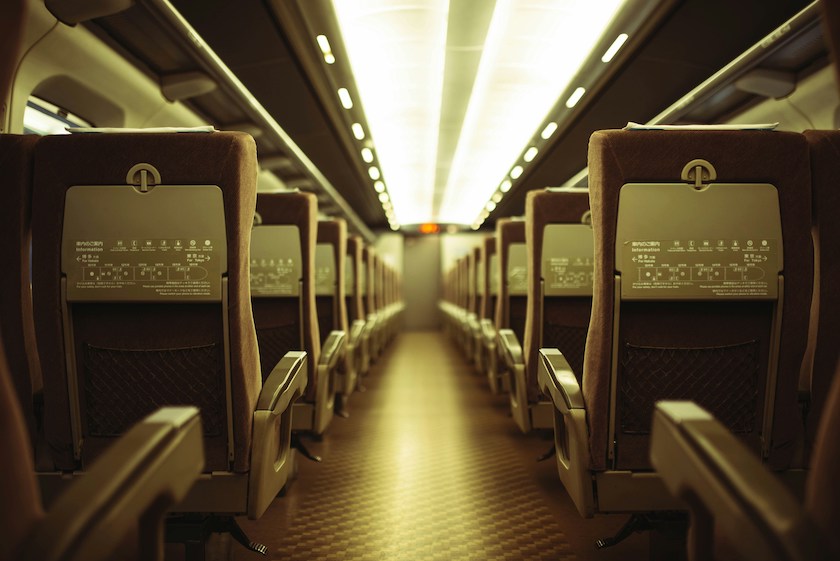
How to Reserve Seats & Board the Bullet Train
Shinkansen have both non-reserved and reserved seats in separate cars. Certain services are fully reserved and others may be switched to fully reserved during national holidays like the New Year, Obon, or Golden Week, so be sure to check before you travel. If you are travelling with a Japan Rail Pass then one of the many advantages of this is that you can make advance seat reservations for free. Seats can be reserved free of charge at Midori no Mado Guchi ticket offices, recognisable by their green sign, or at Travel Service Centres and JR-associated Travel Agencies. For several years, JR East trains have been the only service that has offered an online English language reservation system, which can be reserved from outside of Japan, with all other lines requiring in-person reservation once in Japan. To reserve a seat, simply take your JR Pass to the Midori no Mado Guchi, specify which train you wish to reserve a seat on, stating smoking or non-smoking. You will then receive your reserved seat ticket and simply need to show your Japan Rail Pass at the ticket gate and go to your platform. Be sure to keep hold of your ticket as you may have to present both your JR Pass and seat reservation to the ticket inspector.
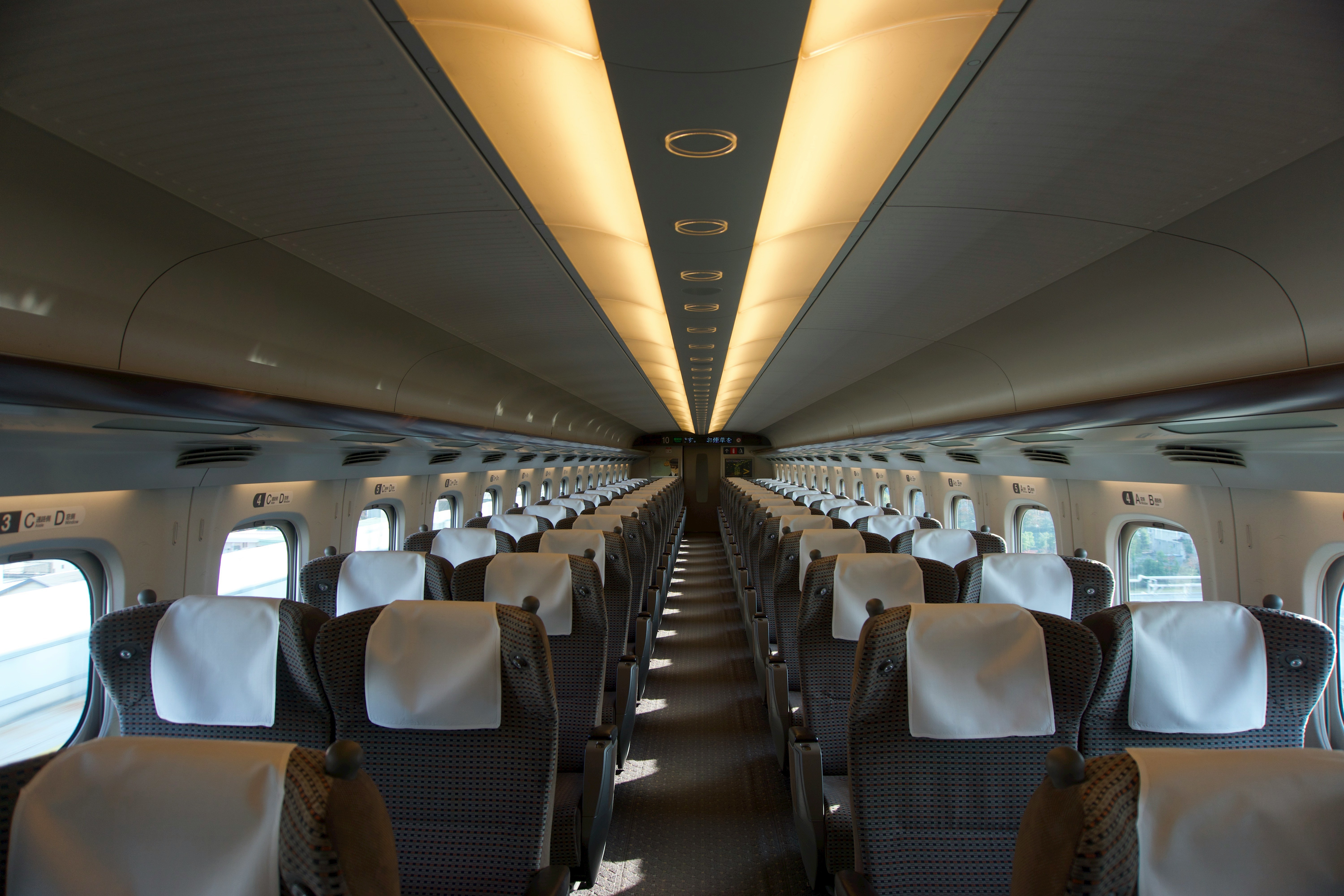
As far as boarding a Shinkansen goes, it’s relatively simple - after arriving at the station, you will first need to go through the regular ticket gates, head to the Shinkansen platform, pass through the Shinkansen ticket gate, and go to your platform. You’ll find your carriage number on your ticket. Carriage numbers can be found printed on the ground and hanging from signs (non-reserve carriages are usually numbered 1-5). Line up behind the white line and wait for your train. Once the train arrives, enter the train and find your seat (seat numbers are indicated above the window). Otherwise, you can sit in any seat if it’s an unreserved carriage. After that, simply sit back and relax! 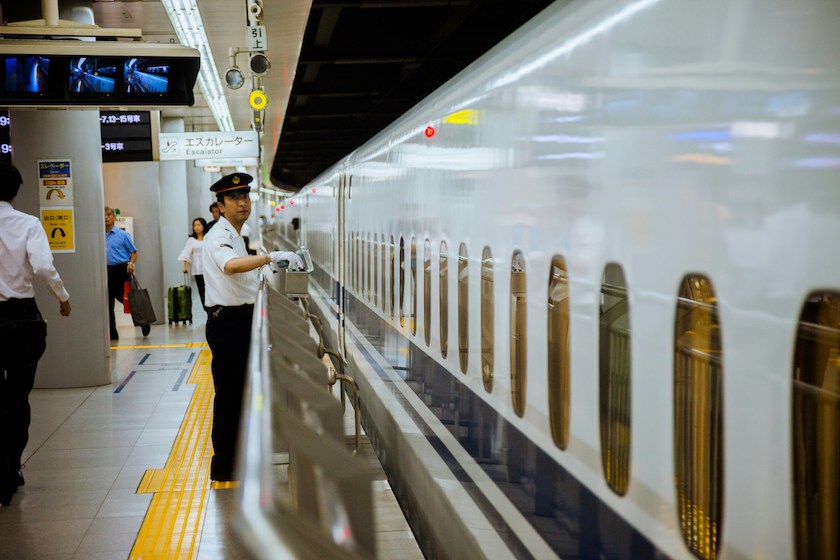
What is the Luggage Allowance on the Shinkansen?
When boarding the Shinkansen, the following regulations apply: You may bring up to two pieces of baggage on board free of charge. For each bag the total of the length, width and height must not exceed 250 centimetres, the length must not exceed two metres and the weight must be no more than 30 kilograms. Luggage pieces less than 160 cm (sum of height x length x width) can be brought aboard without prior reservation. For luggage pieces between 160 cm – 250 centimetres a prior reservation is required, which can be made for free. In case no reservation is made, then a 1.000yen fine will be charged, and your luggage may be moved by the train conductor. Luggage over 250 centimetres may not be brought on the train, and will need alternative transportation. Reservations can be made for free through the Eki-Net App, at a ticket machine or in person at a ticket window. Using the JR Pass, we suggest making your seat reservations and luggage reservations at the same time.
General Shinkansen Rules
Similar to any other form of public transportation, there is a certain etiquette to travelling on the Shinkansen trains:
- Free WiFi: You will receive free WiFi on the vast majority of Shinkansen trains.
- Bento boxes: A small number of trains serve boxed meals (bento)
- No-Smoking: All Shinkansen lines have strict no-smoking policies.
- Form Lines: In order to ensure everybody boards the train safely and efficiently, it is asked of its passengers to form a line.
- Phones on Silent: Proper etiquette includes placing phones on silent, as well as not taking any calls while situated in the car. If a call needs to be made, there are designated spots in between cars where they are accepted.
- Use Headphones: In order to maximise the comfort of nearby passengers, it is asked that all passengers use headphones to listen to any music or video.
- Luggage Requirements: Each passenger is allowed to bring two bags. For the latest weight requirements, see our guidance above and also check the JR Group website.

How To Travel on the Shinkansen
- You can buy regular Shinkansen tickets at ticket counters, machines, and online.
- The JR Pass - a ticket for unlimited travel on Japan’s domestic rail network - can be bought online and can be used on every Shinkansen train line (with a supplement needed for Nozomi and Mizuho trains). As we mentioned above, JR Pass holders also receive a free seat reservation. The JR Pass can be bought for 7, 14 or 21 days depending on the duration of your stay and travel plans.
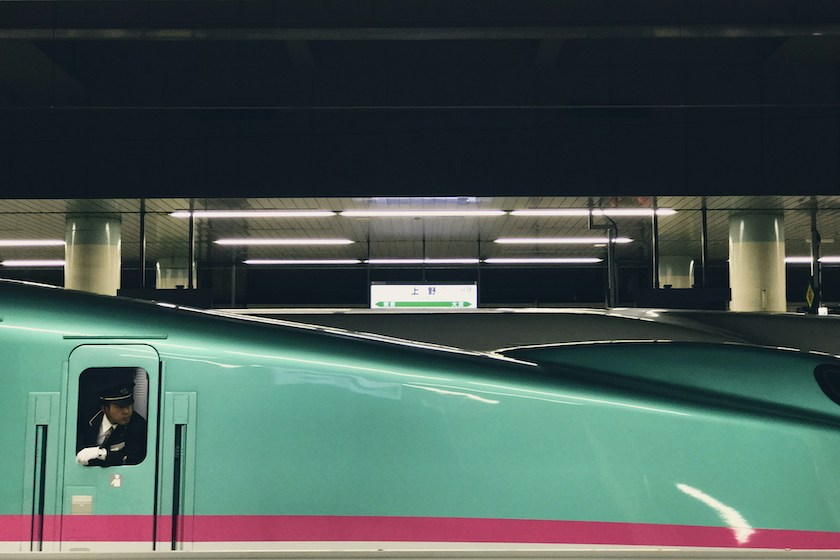
Top Five Shinkansen Facts
Japan’s amazing Shinkansen trains are famous for much more than just their iconic looks. Here are our top five Shinkansen facts:
- In its first year, the Shinkansen transported 11 million passengers! Today, the Shinkansen carries more than 150 million passengers every single year.
- I am speed! Bullet trains are famous for their speed and continue to break records. The Alpha X train Shinkansen is one of the fastest trains in Japan and can make the journey from Tokyo to Sapporo in just three hours - a route that even recently took seven hours. The Class E956 “Alpha-X” Shinkansen is a 10-car experimental bullet train operated by JR-East on the Tohoku Shinkansen line, which is capable of speeds of up to 400 km/h. It is the latest in speed and safety, but there are many more futuristic, pioneering new trains in development.
- Despite being the fastest, Japan’s trains are also incredibly safe, with no passenger accidents in almost 50 years of continuous service. Shinkansen trains feature special automatic air brakes for earthquakes and the latest trains, such as N700s supreme shinkansen, have full active suspension and an all new ATC braking system for safety stops during earthquakes and other emergencies. The Alpha X, meanwhile, also features the most innovative safety technology, including air brakes on the roof and magnetic plates near the rails to slow down, in addition to the conventional braking system.
- Shinkansen are so efficient that the average delay is just 12 seconds!
- Bullet trains are eco-friendly! A recent study showed that Shinkansen produce 92% less carbon emissions per seat than an aeroplane.
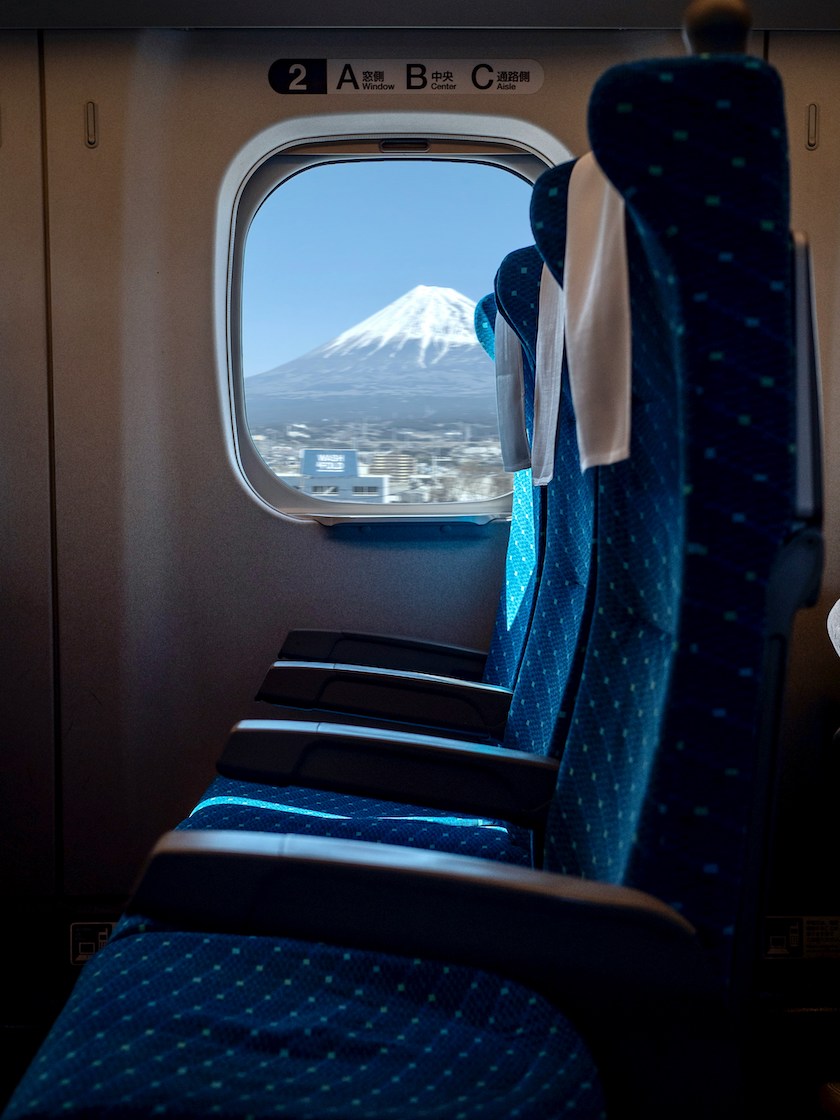
Bonus Recommendations
Naturally, we have even more on the subject of Japan’s world-leading train network on the JR Pass blog. Here are a few bonus recommendations for you to read at your leisure to further enhance your Japan railway knowledge.
- For those new to travelling by train in Japan, we’ve put together a comprehensive Visitors Guide to Trains and Railways in Japan which offers an indispensable and detailed introduction to the country’s rail network.
- Did you know that Japan has more than 30 different types of trainspotters? Read our guide to Trainspotting in Japan for more.
- From the busiest train station in the world to the best train food you’ll ever have, find out more in our Top Ten Amazing Japanese Train Facts.
- Japan’s trains don’t just connect its amazing cities, they’re also a gateway to the country’s stunning coastlines, untouched rural countryside, and mountain hideaways. Read our guides to Japan’s Coastlines by Train and Japan’s Best Rural Train Journeys for more.
